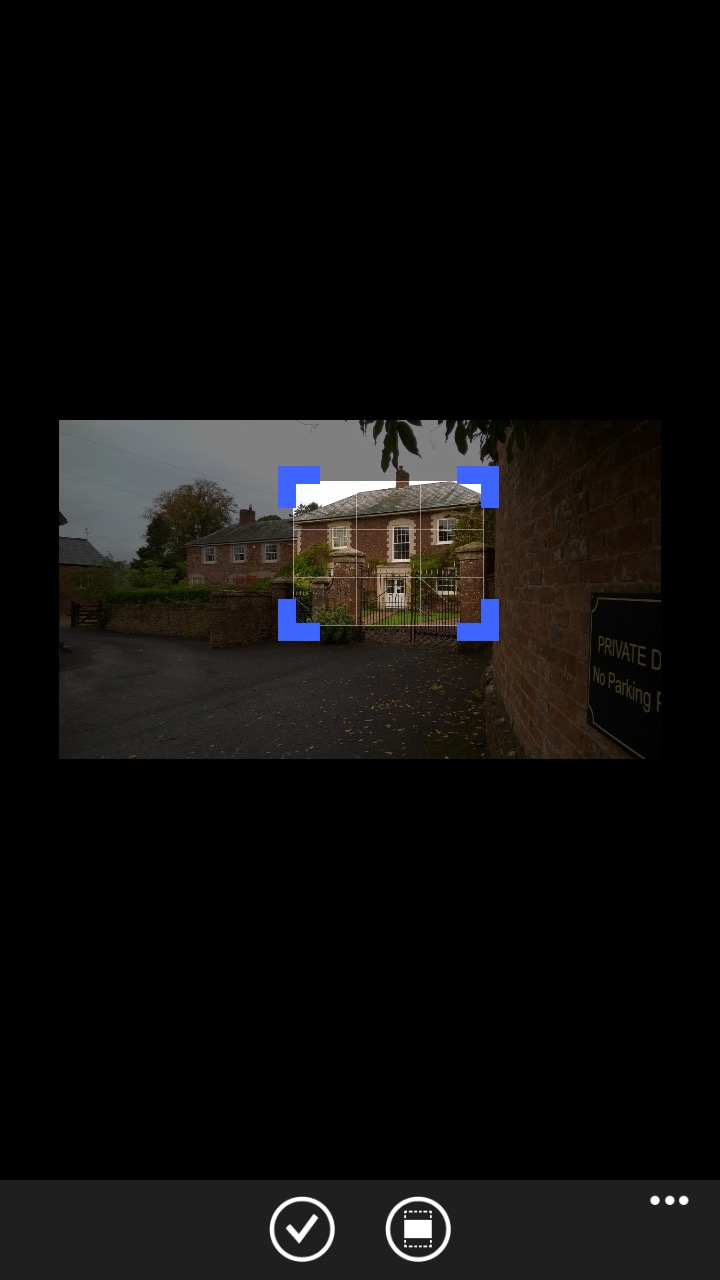
On the Lumia 830, 920, etc, with no oversampling in the camera hardware...
Begging the question: What's the difference, in terms of image quality and output, between 'cropping' and 'reframing' when there's no oversampling in the camera? I.e. 'reframing' is offered as the default way to 're-open' immediately captured images, but on the toolbar there's 'Edit' and if you open the image from Photos, there are multiple ways to 'Edit', not least using Windows Phone's native 'Crop, rotate, auto-fix' option.
On the likes of the 1020 and 930, reframing doesn't alter the output resolution at all, i.e. there's intelligent resampling going on, but this clearly isn't the case for lesser device cameras, where this simply isn't possible. Or could the operation be doing some fancy interpolative sampling of its own?
So, time for a test. Reframing or cropping - what's the difference to the resulting photo quality?
None at all.
[Coincidentally, the same phrase used famously in the bulldozer scene in HHGTG: "Some factual information for you. Have you any idea how much damage that bulldozer would suffer if I just let it roll straight over you?" "How much?" said Arthur. "None at all," said Mr. Prosser.]
I did some experimenting:


On the left, using the 'reframe' tool to multi-touch zoom into the original image, on the right, selecting an area for 'cropping'.
The end result of each operation was.... exactly the same. In other words, 'reframing', or 'smart cropping' as some have taken to calling it, is - for devices without oversampling cameras - essentially no more than 'cropping'. Which is a trifle confusing for the end user, I'd argue.
PS. Although the results were identical, there are two usability differences that are worth noting (see also the comments section below):
- The interface - I do find it much easier to judge cropping in the 'reframing' interface, while the selection of a cropping rectangle (e.g. above, right) is fiddly on a small phone screen!
- 'Reframing' keeps a '.orig' (original) version of the initial image in addition to the reframed/cropped version (you can verify this if you look at the file system on the phone or copy off an image), so that you can reframe again if you need to, i.e. less savagely, whereas simple cropping is destructive, i.e. no original is retained
